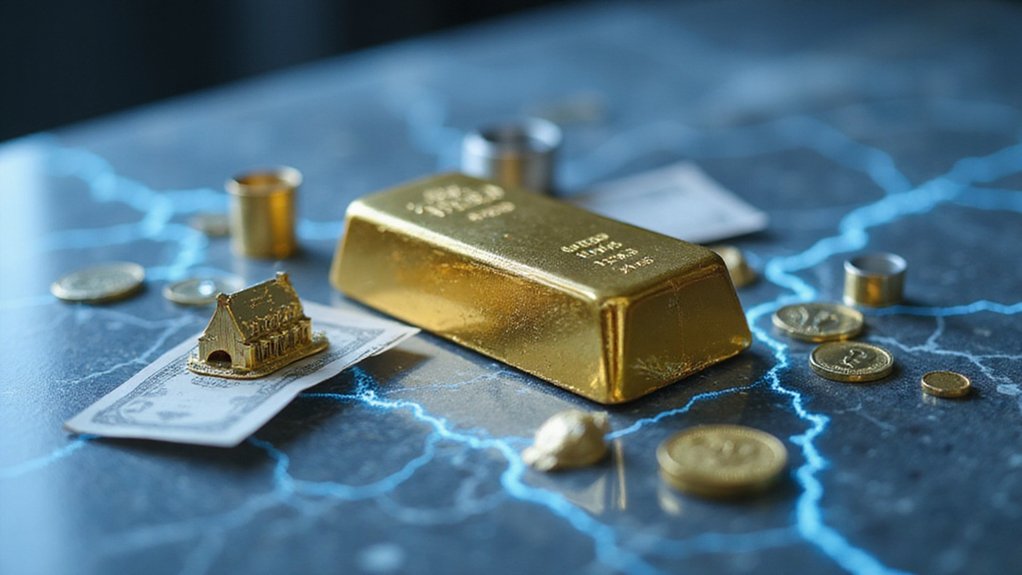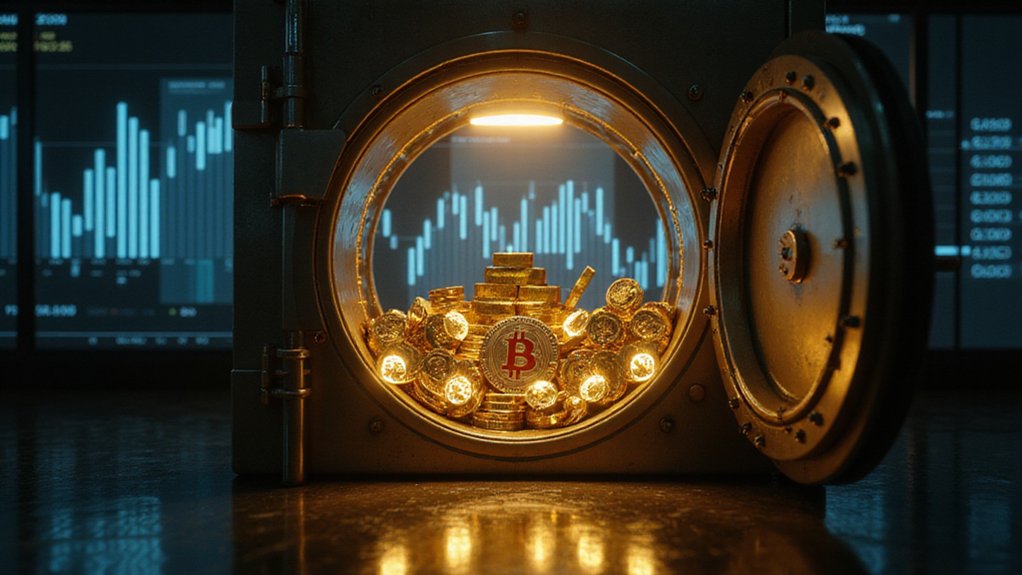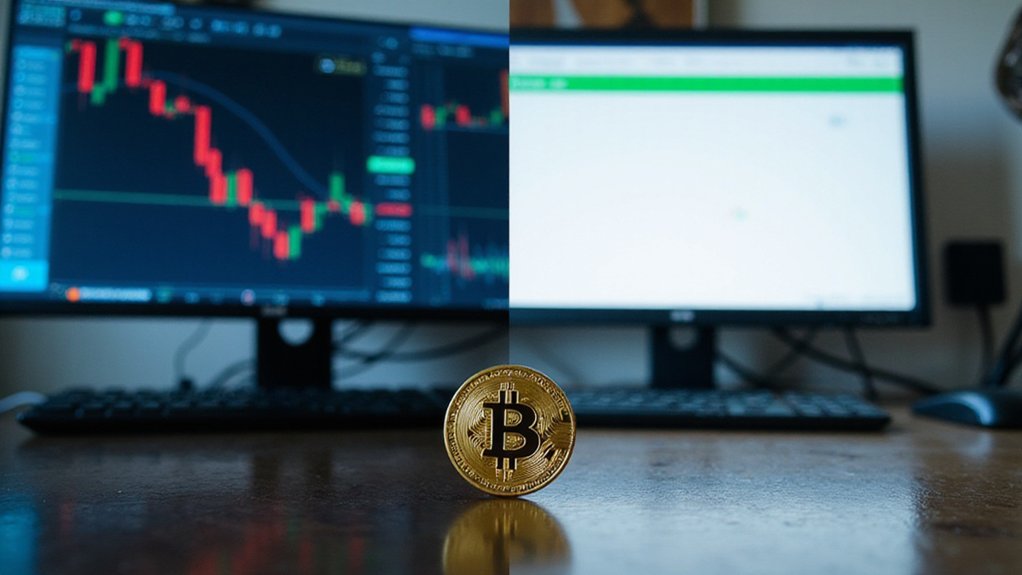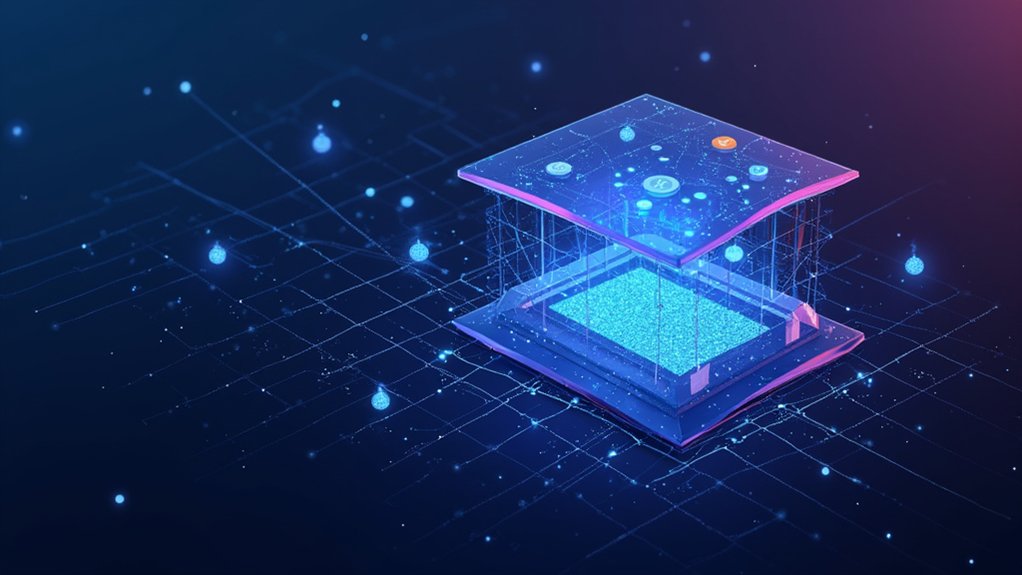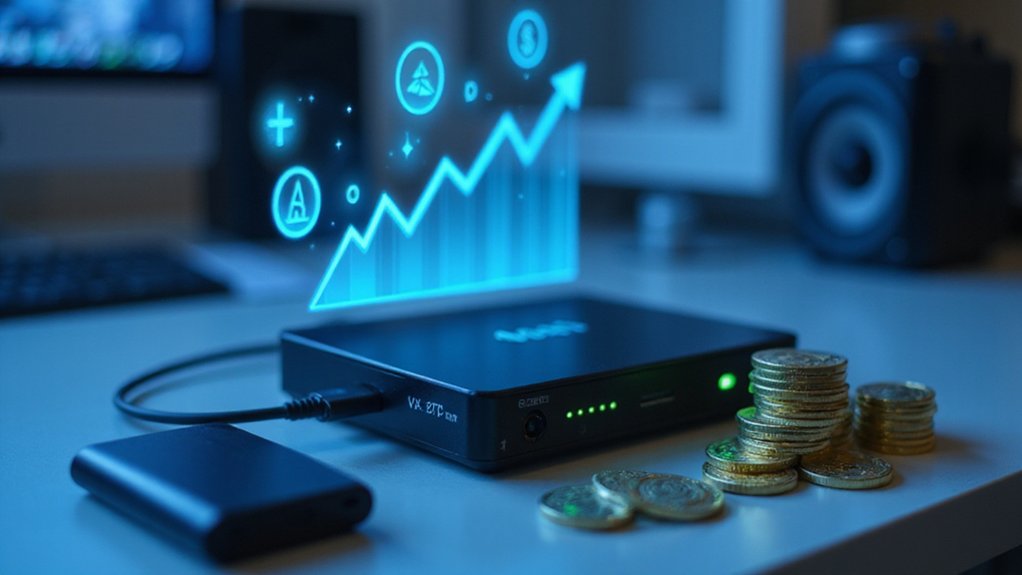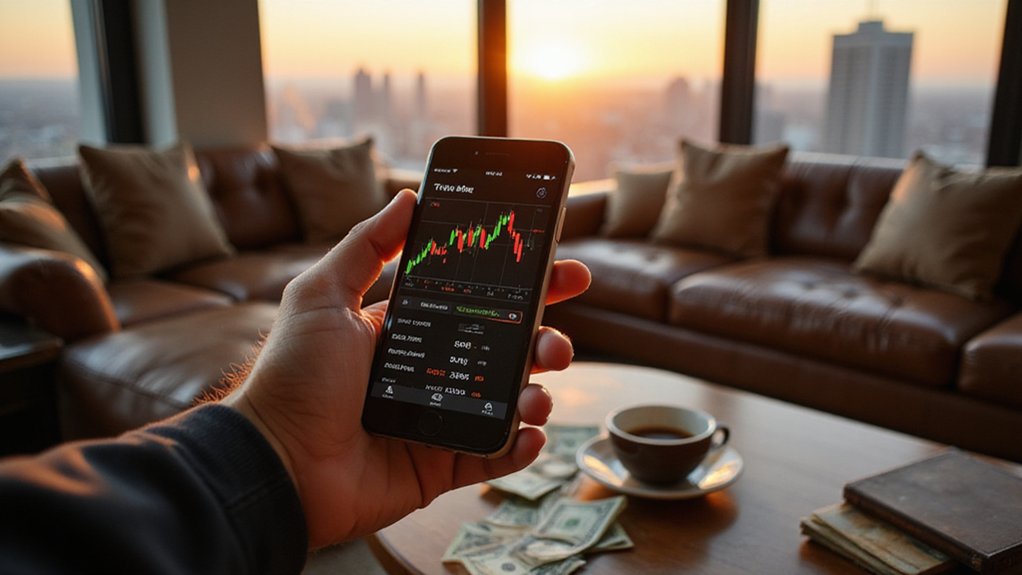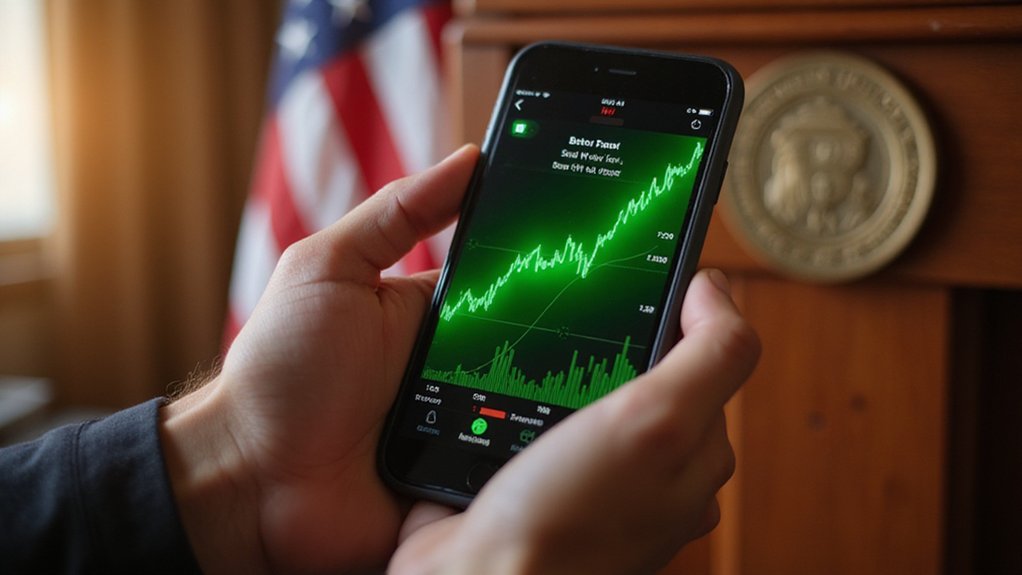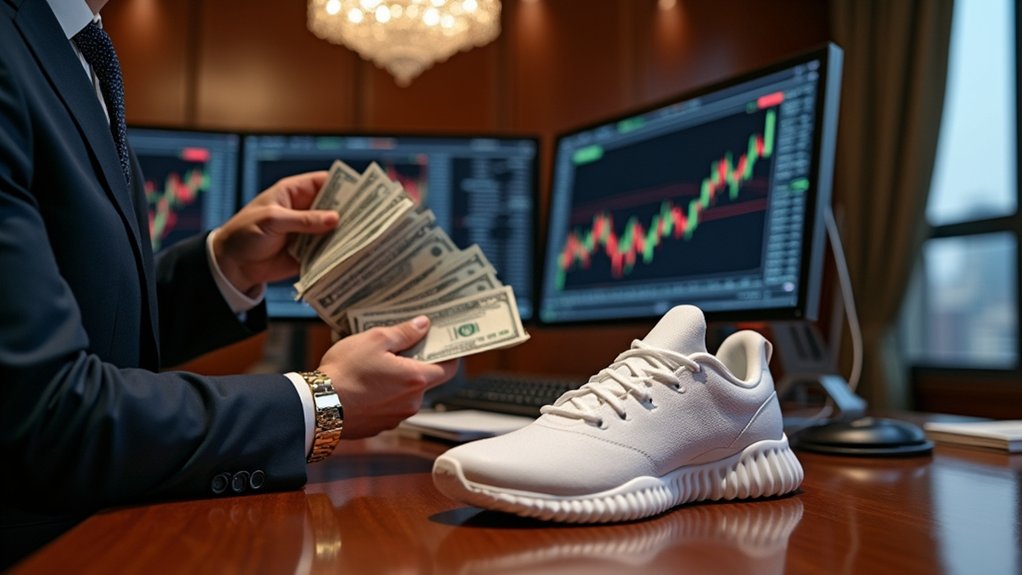RWA tokenization transforms tangible assets like real estate and collectibles into blockchain-based digital tokens, enabling fractional ownership of previously inaccessible investments. This financial alchemy democratizes premium assets (imagine owning $100 of a Picasso), enhances liquidity, and slashes transaction costs by removing intermediaries. Despite regulatory ambiguity and cybersecurity concerns, the process represents a paradigm shift in ownership concepts—turning illiquid treasures into tradable tokens settling in minutes rather than days. The intersection of traditional finance and blockchain beckons with intriguing possibilities.

The alchemy of modern finance has produced few innovations as potentially transformative as Real-World Asset (RWA) tokenization—a process whereby tangible and intangible assets from the physical world are transmuted into digital tokens on blockchain networks.
This financial transmutation converts ownership rights into tradable digital tokens, representing either fractional or complete stakes in underlying assets ranging from Manhattan penthouses to corporate bonds and even intellectual property portfolios.
The tokenization process follows a methodical sequence: assets are sourced and classified (an often byzantine regulatory exercise), physical assets secure custodial arrangements, tokens are minted on selected blockchains, distributed to investors, and subsequently traded—creating markets where none existed before.
Unlike their purely digital NFT cousins, RWA tokens frequently represent fungible ownership rights, though they can embody unique assets when circumstances warrant. The process produces fungible tokens for exchange or non-fungible tokens representing unique assets.
This digital alchemy offers compelling advantages.
The fractional ownership model democratizes access to premium assets (suddenly, that $50 million Picasso becomes accessible in $100 increments—imagine!), while traditionally illiquid investments gain newfound fluidity.
Transaction costs plummet as intermediaries find themselves disintermediated, and settlement times collapse from days to minutes—efficiencies that would make traditional bankers weep.
The asset universe amenable to tokenization proves remarkably expansive: real estate (that perennial favorite), financial instruments, commodities, intellectual property, and even rare collectibles all find themselves digitized and distributed.
Carbon credits, those curious artifacts of environmental capitalism, have proven particularly suitable candidates for blockchain representation.
Many investors are turning to RWA tokens as an alternative to volatile cryptocurrencies that experience extreme price fluctuations unlike stablecoins designed for value preservation.
Yet obstacles remain.
Regulatory frameworks struggle to categorize these digital chimeras, cybersecurity concerns loom large, and the technical architecture linking digital tokens to enforceable real-world rights remains somewhat precarious.
The challenge of convincing institutional investors to abandon time-tested mechanisms for blockchain-based alternatives shouldn’t be underestimated.
Despite these hurdles, RWA tokenization continues its inexorable advance.
Companies like WisdomTree are leading the way by offering tokenized versions of traditional mutual funds that comply with established securities regulations while leveraging blockchain’s transparency and efficiency.
As markets mature and regulatory clarity emerges, this peculiar financial innovation may well redefine asset ownership and exchange—transforming not just what we own, but how we conceptualize ownership itself.
Frequently Asked Questions
How Is the Value of Tokenized RWAS Determined?
Tokenized RWA values are determined through a multi-faceted process: initial asset appraisal (using traditional valuation methods like comparables and expert assessments), fractional division calculations, and ongoing market dynamics.
Smart contracts codify these valuations while incorporating liquidity premiums or discounts.
The ultimate arbiter—somewhat predictably—becomes the market itself, where investor confidence, regulatory frameworks, and trading volumes inevitably shape the token’s true worth beyond its underlying asset’s appraised value.
What Happens if the Underlying Physical Asset Is Damaged?
When a tokenized asset’s physical counterpart suffers damage, a cascade of contractual consequences unfolds.
Insurance policies (hopefully in place) activate to compensate token holders, while smart contracts may automatically adjust token values or trigger remediation protocols.
The asset’s market valuation inevitably declines, reflecting its compromised condition.
Legal frameworks—often spelled out in thorough custodial agreements—determine liability allocation, while dispute resolution mechanisms prevent lengthy litigation.
Transparency becomes essential; regular damage reporting maintains investor confidence during such inevitable material mishaps.
Can Tokenized RWAS Be Used as Collateral for Loans?
Tokenized RWAs absolutely serve as loan collateral—in fact, it’s one of their most compelling use cases.
Borrowers can leverage their tokenized real estate, art, or commodities without liquidating the underlying assets (unlocking previously immobile capital).
This arrangement benefits both sides: lenders receive tangible asset backing while borrowers access liquidity at potentially lower rates.
The fractional nature of tokenization further democratizes this process, allowing partial asset collateralization that would be logistically impossible in traditional finance.
Are There Tax Implications Specific to Tokenized Real-World Assets?
Tokenized real-world assets face multifaceted tax implications that traditional assets might envy for their complexity.
These include rental and revenue taxes in the asset’s jurisdiction, capital gains considerations at both SPV and token levels, potential withholding taxes on distributions, and varying VAT treatments depending on token classification.
The jurisdictional puzzle—involving asset location, SPV domicile, and investor residency—requires careful navigation through tax treaties to avoid the particularly unpleasant scenario of double taxation.
How Do Regulatory Changes Affect Existing Tokenized Assets?
Regulatory changes force existing tokenized assets into an adapt-or-perish scenario, necessitating compliance overhauls that can range from merely expensive to existentially threatening. Established tokens must reconfigure legal structures, enhance disclosure protocols, and potentially modify underlying smart contracts—all while maintaining operational continuity.
The silver lining? Enhanced regulatory clarity typically attracts institutional capital and improves market liquidity, potentially offsetting compliance costs with valuation premiums that reward early adopters who successfully navigate the regulatory labyrinth.
